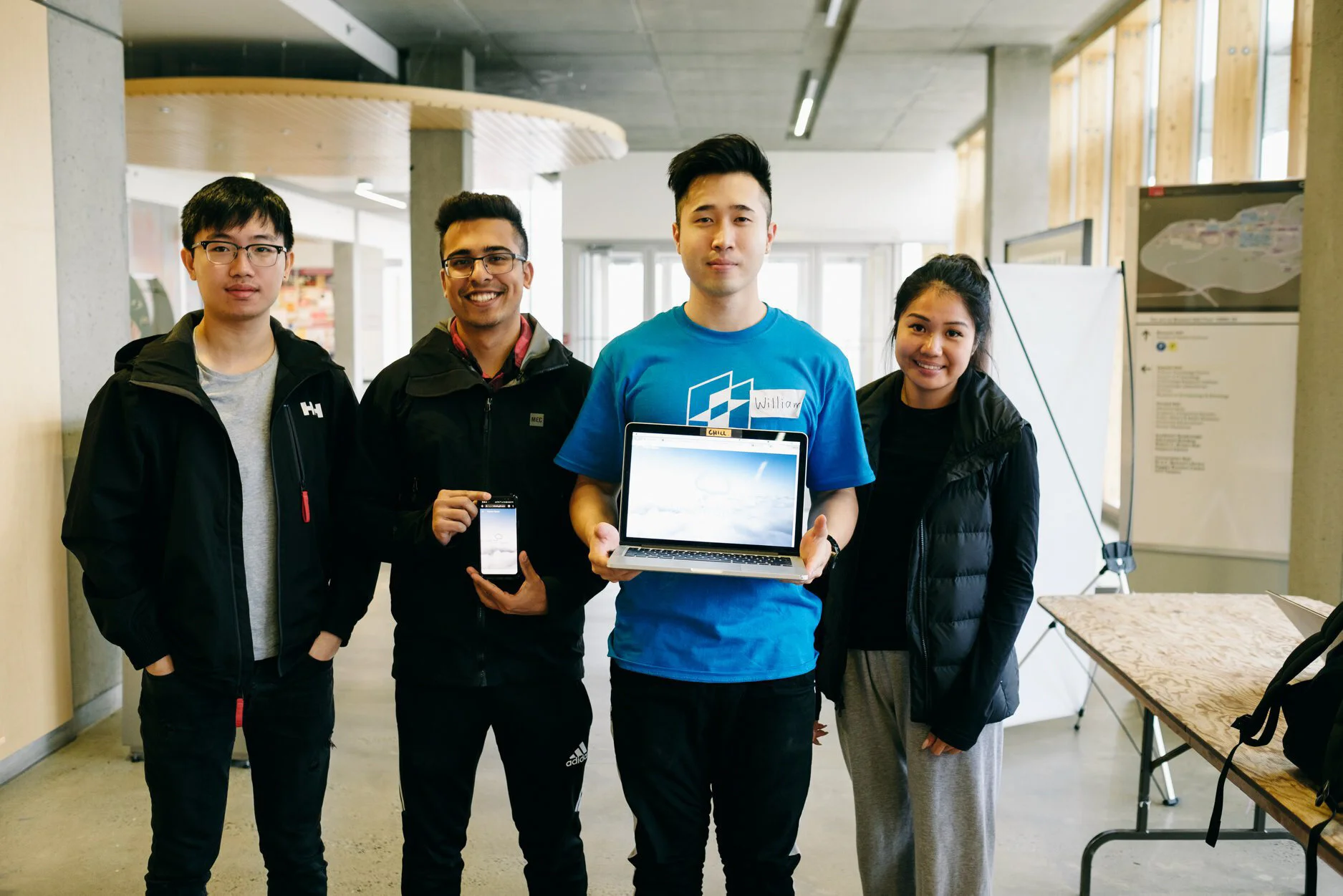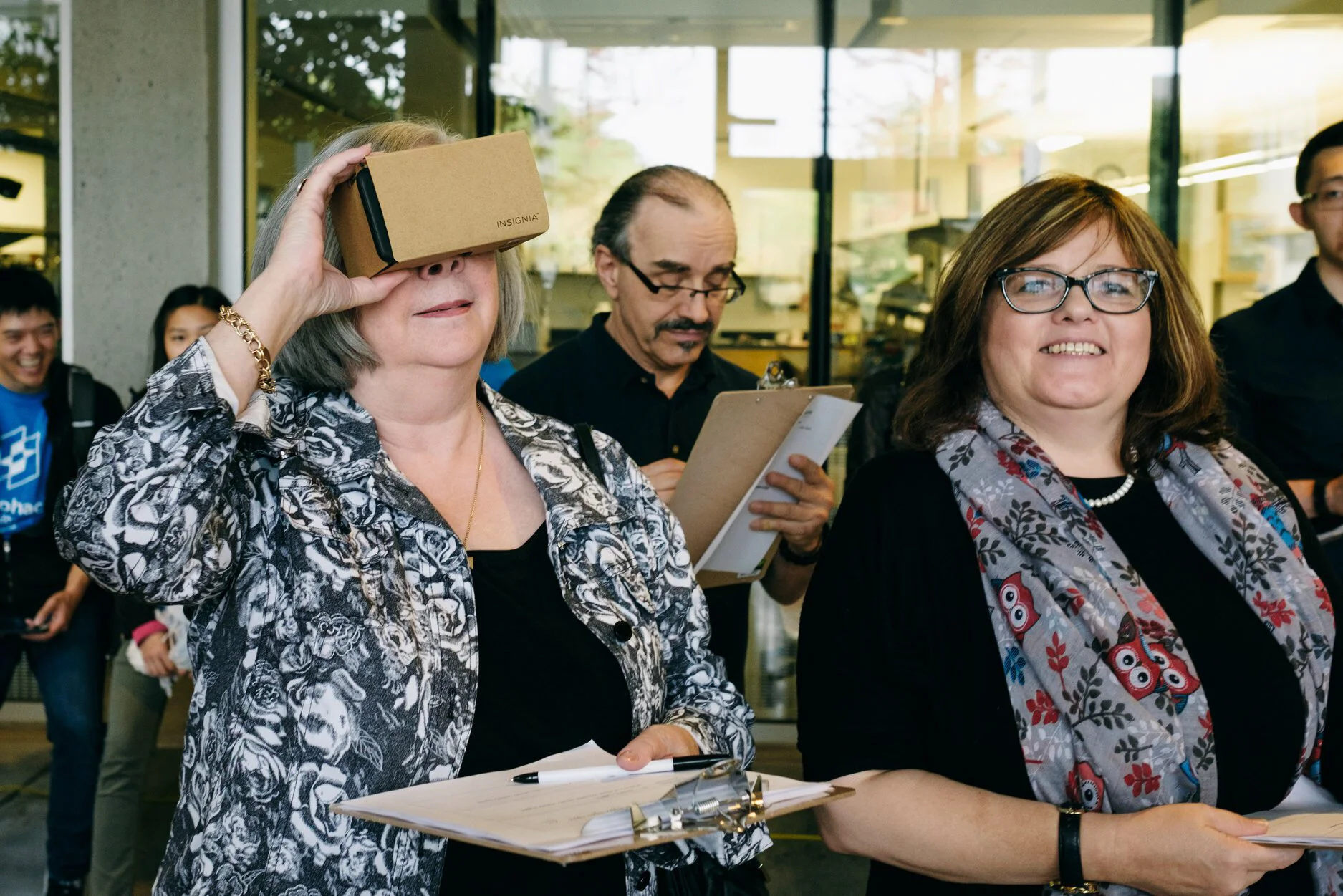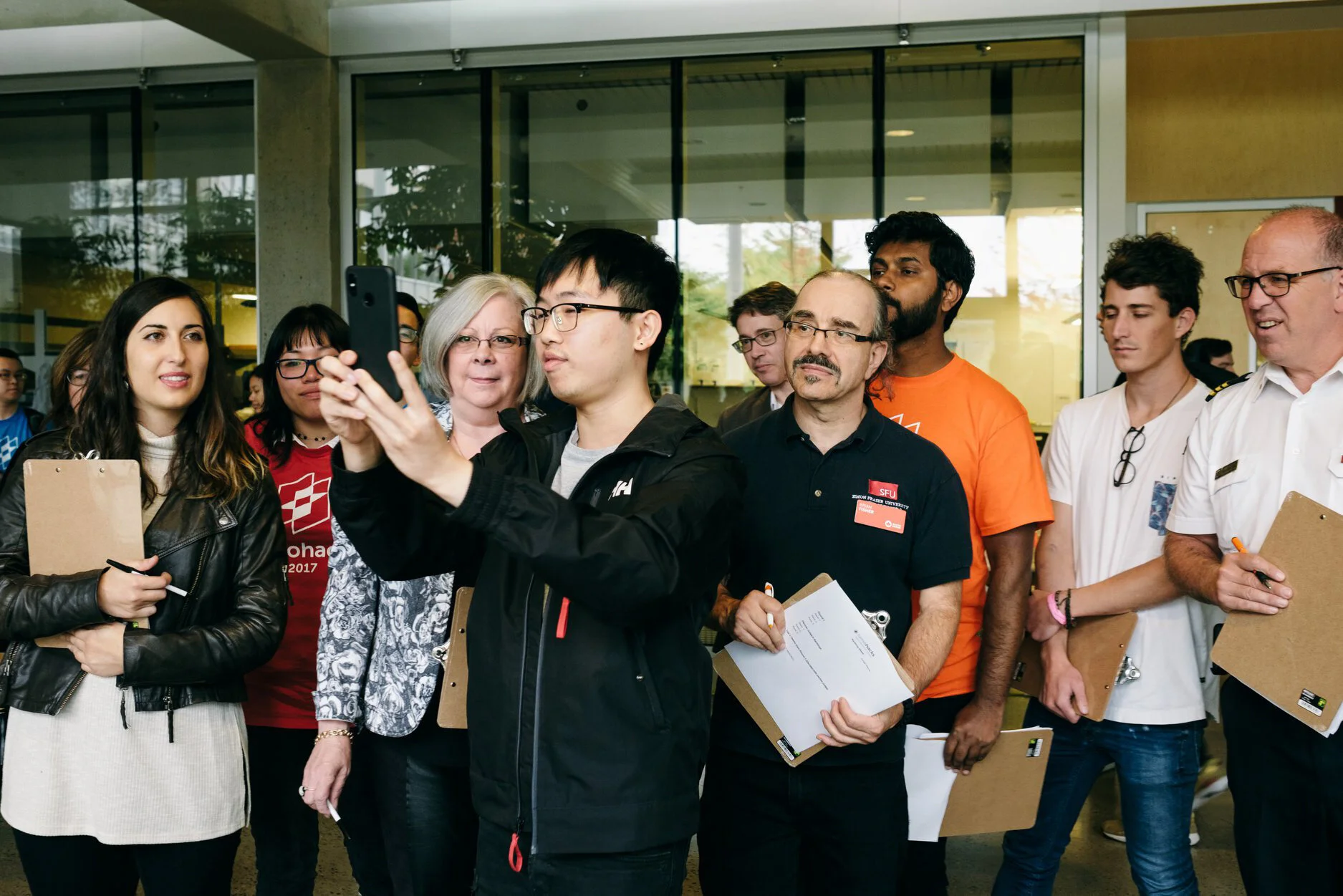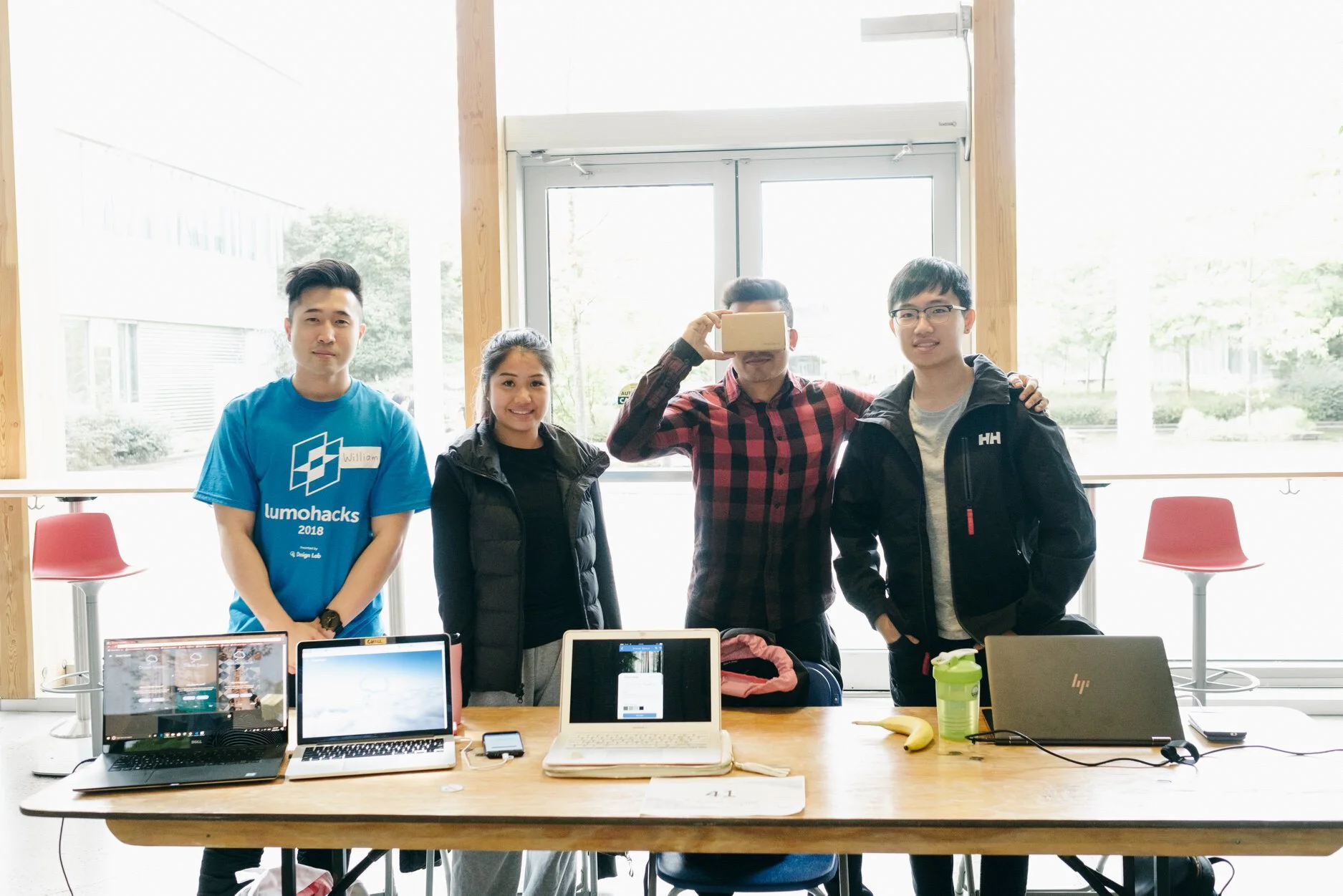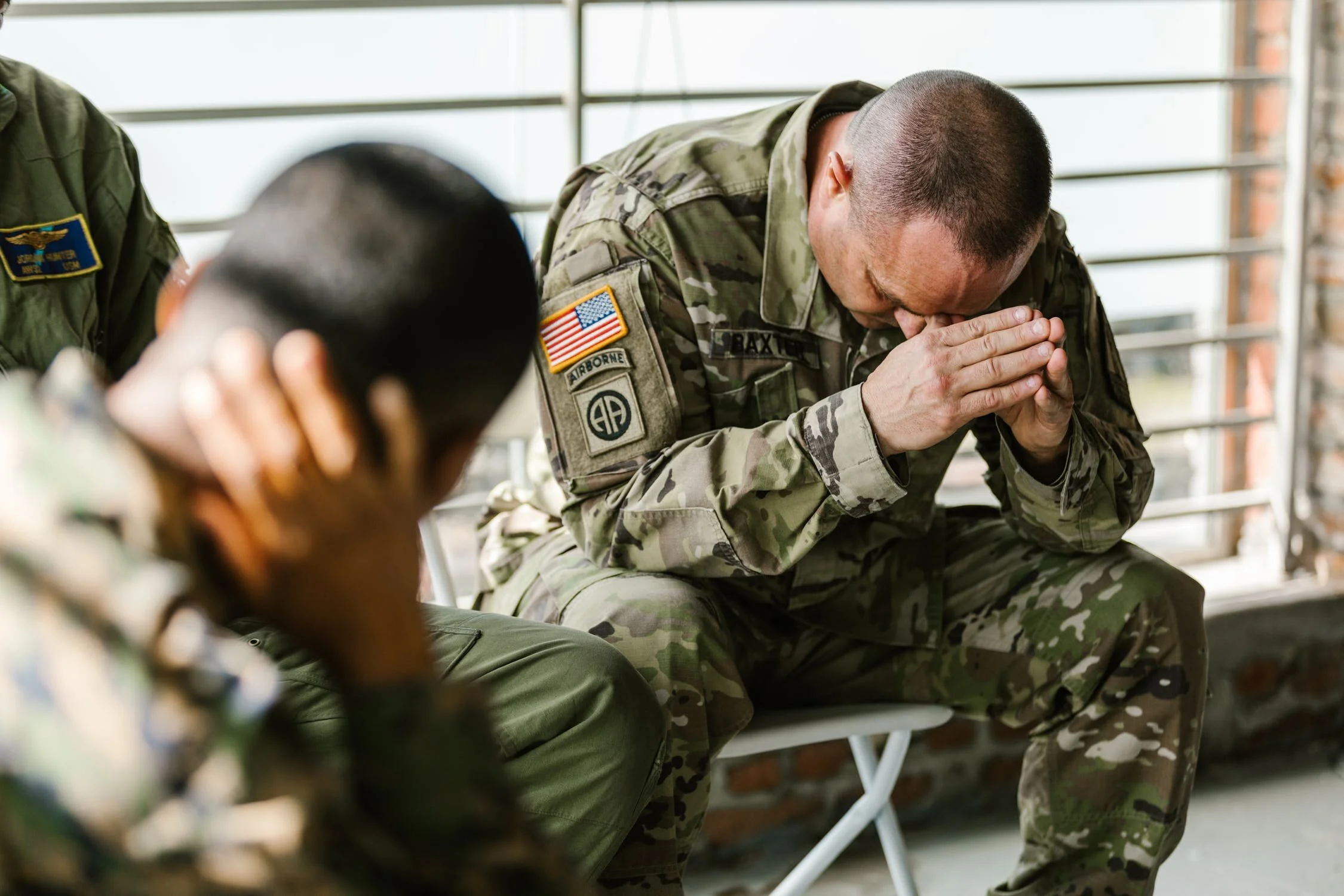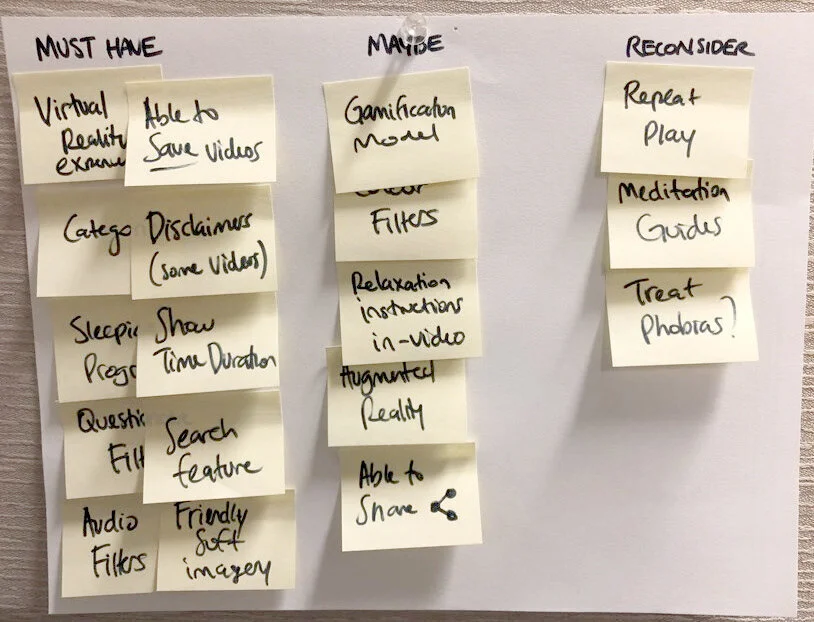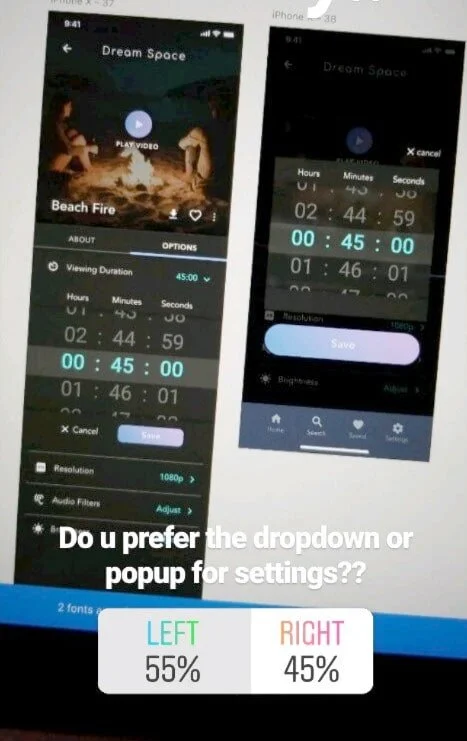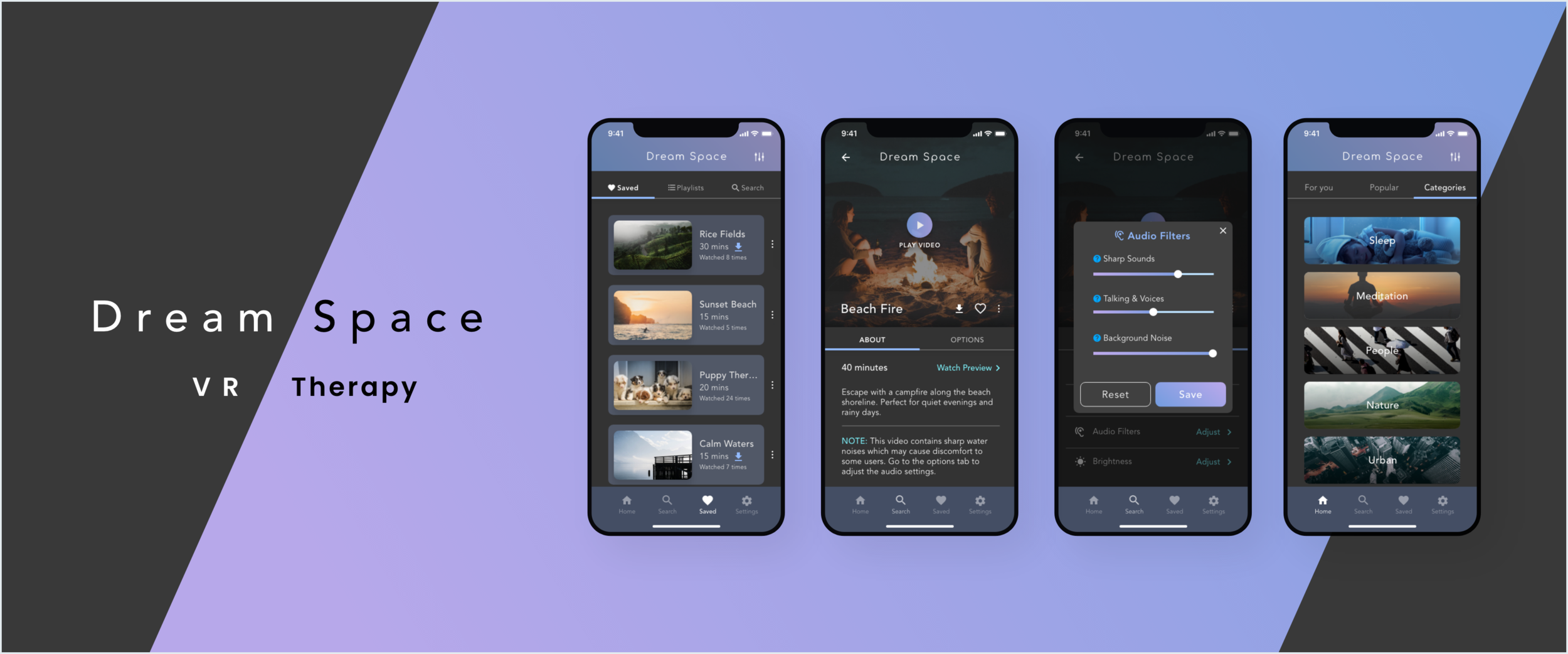
Overview
Dream Space is a hackathon project for LumoHacks 2018, which made it to the top 5 finalists out of 30+ projects. Dream Space is a mobile application that provides virtuality reality videos with therapeutic experiences. The app was designed for first-responders to combat depressive feelings so that they would utilize healthy methods of coping and stay away from drug abuse.
Hackathon Team:
Chris Liu - Software Developer
Jennifer Ngo - UX Researcher
Nishat Gupta - Software Developer
William Soemargo - UI UX Designer (me)
Identifying the Problem
First-Responders and Veterans often experience post-traumatic stress syndrome due to their professional experience. Dream Space was designed to give them an escape from negative emotions and substitute unhealthy coping habits (e.g. alcohol, drug abuse).
Creating a Solution
At the hackathon, we were given statistics that showed many individuals affected don’t have the motivation to seek treatment (or cannot afford it). We wanted to create a free, alternative and convenient solution for users to escape their depressive moods. We created Dream Space, a VR streaming platform where users can immerse themselves in virtual reality videos that specialize in therapeutic properties (eg. therapy dogs, nature walks).
Personas
At the hackathon we had several keynote speakers; many of these were first responders who shared their experiences dealing with PTSD and substance abuse. Through listening them, we developed three personas that reflected who our potential users might be. This helped our team ground our design and made us ask ourselves "how will this benefit the user" with every feature we wanted to implement.
Research
We researched therapeutic ways people dealt with panic attacks and depressive episodes. One method to stop panic attacks is to stop what you are doing and close your eyes to block out external stimuli; its even better if you picture a happy place in your head to redirect your focus. Some people also find it helpful to focus all their attention on a single object to reduce the effects of other stimuli. We decided on creating a virtual reality platform so users could embody all these mental tools conveniently with one app.
Screenshots from Healthline
Competitive Analysis
There are many therapeutic apps that deliver similar results. However, what we found is that virtual reality experiences are not easily accessible from home. For example, Headspace and Calm have a paywall that discourages users from subscribing. The military uses similar VR therapy, but it is not accessible to the public. We decided to create a mobile VR app, so it can easily be used with a cheap Google Cardboard or any VR headset.
Mapping Features
To cover the weaknesses, we wanted to make our app free and easily accessible at home. We were also planning to create a gamification model to stimulate a feeling of achievement for users as well as creating realistic experiences for sight and sound. However, this idea was put aside due to time constraints and chose features that would be easiest and quickest to work on instead.
User Flow
We mapped out a very simple user flow for our presentation demo and placed our features (sticky notes) on where we found was most appropriate in the flow chart.
Mood Board
I wanted to choose colours that embodied a warm calming vibe that would be suitable for night-time use.
High Fidelity Prototype
I designed a dark interface to be easier on the eyes. Therapeutic videos are often viewed at night (to relax or get ready for bed) so the interface reflects the user's surroundings and tries not to interfere with melatonin production.
Questionnaire
On-boarding begins with a self-administered questionnaire to identify potential triggers that deliver negative emotions to users. These questions help the app filter through what videos to show to the user, and more importantly, which videos to not show.
Video Play Options
Several video options are also available for users to customize their VR experience. Audio filters are available to amplify user preferences. For example, users may like the calming sounds of rain and maximize it while reducing talking and voices in VR videos featuring other people.
After pressing the "play" button, the screen prompts users to rotate their screen and insert their devices into a virtual-reality headset such as a Google Cardboard or Google Daydream (shown below).
Testing
We had only 24 hours to finish our application and present to the judges; therefore, we had limited time to test. We could only ask our friends and family for their input on our design decisions. Below are two voting sessions we did on instagram regarding our video player.
Saved Videos
Users can save videos they enjoy and create playlists. To clearly distinguish the saved videos page from videos being browsed, the starry night background is removed. Users can also search within their saved videos through the another search icon within the page.
Landscape Views
Rotating the phone offers different layouts to optimize functionality:
1) Right Aligned Buttons
Sign-in Buttons and survey responses are positioned on the right (to be easily accessible with the right thumb). This is vital for bigger phones where touching the middle of the screen in landscape view is more difficult than the edges.
2) Three Column Grids
Landscape view offers a three column grid instead of two, and hides the bottom navigation bar in a hamburger menu on the bottom right.
3) Two Column Search Suggestions
Search suggestions are shown in two columns so the user can minimize scrolling in the limited viewing pane.
Reflection
Our initial goal was to provide first-responders and veterans with a product to relax their mind from their professions and substitute unhealthy coping habits. Dream Space allows everyone from first-responders to college students to enjoy therapeutic virtual reality experiences and relax their mind.
Through user-testing sessions, someone brought up how Dream Space might encourage drug-use to enhance the experience. This was the fall-back to our project and our original goal. However, someone else brought up how being under drug influence enlarges one's pupils and makes their eyes more sensitive to light. Therefore, this would deter users from using Dream Space while on drugs because the virtual-reality headset would have their eyes very close to a phone screen and cause intense screen glare.
This can be proven with further development and testing. Given more time, I would also have liked to include text instructions within the virtual reality videos to help with relaxation (e.g. deep breathing and body postures to mimic). I'm very happy with how this project turned out and proud of my team's work in making it to the top five teams at the LumoHacks hackathon.
